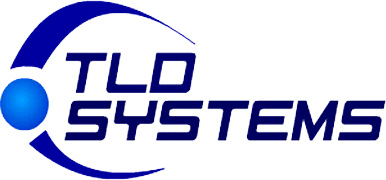Can the use of an interpreter (ie. different language spoken, hearing impaired) increase the level of E/M service based upon time?
Yes, the time spent using an interpreter can increase the level of an Evaluation and Management (E/M) service because the total time spent by the provider can now be used to determine the E/M code level, including the time it takes to communicate through an interpreter. This time is considered a necessary part of the encounter, such as reviewing history and counseling the patient, and is included in the total time spent on the date of the encounter.
Guidelines For Selecting Level of E/M Service Based on Time
- For coding purposes, time for these services is the total time on the date of the encounter.
- It includes both the face-to-face time with the patient and/or family/caregiver and non-face-to-face time personally spent by the physician and/or other qualified health care professional(s) on the day of the encounter (includes time in activities that require the physician or other qualified health care professional and does not include time in activities normally performed by clinical staff)
- It includes time regardless of the location of the physician or other qualified health care professional (eg, whether on or off the inpatient unit or in or out of the outpatient office). It does not include any time spent in the performance of other separately reported service(s).
When total time is used to select the level of E/M service, the amount of time needs to be broken down into specific component parts, each designated with the amount of time that was spent performing those components adding up to the total time that is used to select the level of E/M service. For example
- Physician or other qualified health care professional time includes the following activities, when performed:
1. preparing to see the patient (eg, review of tests)
2. obtaining and/or reviewing separately obtained history
3. performing a medically appropriate examination and/or evaluation
4. counseling and educating the patient/family/caregiver
5. ordering medications, tests, or procedures
6. referring and communicating with other health care professionals (when not separately reported)
7. documenting clinical information in the electronic or other health record
8. independently interpreting results (not separately reported) and communicating results to the patient/family/caregiver
9. care coordination (not separately reported)
- Do not count time spent on the following:
1. The performance of other services that are reported separately
2. Travel
How interpreter time is included
- Total time: The current rules for office and outpatient E/M codes (since January 1, 2021) allow providers to base the service level on the total time spent on the date of the encounter.
- Includes interpreter time: This total time includes both face-to-face and non-face-to-face time, which can include the time a provider spends conversing with a patient through an interpreter.
- Examples of included time: Time spent preparing for the visit, reviewing patient history, counseling the patient and/or family, and documenting the encounter can all be included, and the time required for interpretation is a part of this process.
- Provider must document: To use the time-based method, the provider must document the total time spent on the date of the encounter.
Important considerations
- You cannot bill the patient for the interpreter's services.
- The interpreter's time is not an add-on charge but is part of the overall provider's service time.
- While the patient cannot be billed for the interpreter, some payers may cover the cost of an interpreter through separate codes like HCPCS code T1013.
- Coding based on time is an option, but providers can still code based on Medical Decision Making (MDM).
Yes, time spent using an interpreter can be included in the total time used to determine the level of an Evaluation and Management (E/M) service, provided that:
- The E/M code selection is based on total time (applicable to most office/outpatient E/M codes).
- The time is personally spent by the physician or other qualified healthcare professional (QHP) with the patient and/or family/caregiver.
- The time spent is for medically necessary patient care activities (e.g., history taking, counseling, educating, care coordination).
- The time spent waiting for the interpreter or on non-patient care tasks is not counted.
- The time for the interpreter service is not billed separately using another CPT or HCPCS code (to avoid double-dipping).
The fact that the conversation takes longer due to the back-and-forth process of interpreting can justify the use of a higher E/M code level based on time. This is considered time spent communicating with the patient/family to ensure understanding of the treatment plan and is a medically necessary part of the visit.
Important Considerations:
- Payer Policies: While CPT guidelines allow this, specific payer policies may vary (e.g., some Medicaid plans cover interpreter services separately). It is crucial to check with individual payers, especially Medicare, for their specific rules and to avoid potential compliance issues.
- Documentation: The medical record documentation must clearly state the total time spent and list the activities performed, including that an interpreter was used and how that time was spent.
- Medical Necessity: The extra time must be medically necessary for the patient's care, not just for convenience.
What are examples of documentation for using an interpreter in E/M services?
When using time to determine the E/M service level, documentation for an encounter involving an interpreter must be specific, medically necessary, and clearly outline how the physician or QHP spent the time.
Required Documentation Elements
The documentation should include the following:
- Confirmation of Interpreter Use: State that an interpreter was used.
- Interpreter Details: The source of the interpretation (e.g., UCSF staff interpreter, video, telephonic, agency interpreter), the interpreter's name or identification number, and the language.
- Patient Consent (If applicable): If a family member or friend is used (generally discouraged), document that the patient specifically requested this, they agreed, and a qualified interpreter was not immediately available (unless an emergency).
- Total Time Spent: The exact total time spent on the date of the encounter, including start and end times or a precise total number of minutes. Avoid vague time ranges.
- Description of Activities: A breakdown of the specific, medically necessary activities performed by the provider that contributed to the total time, and the fact that these activities took longer due to the back-and-forth process of interpreting.
- Statement on Separate Billing: While not always required in the note itself, the provider should be aware that the interpreter service time is not billed separately using a different CPT/HCPCS code (like T1013) to avoid double-dipping.
This is my opinion.
Michael G. Warshaw, DPM, CPC



Read Comments